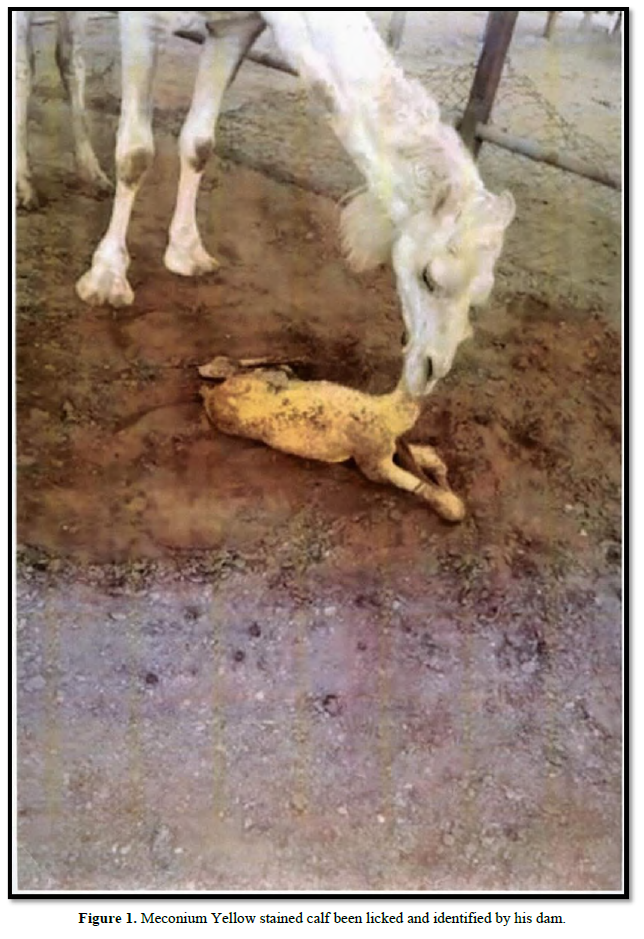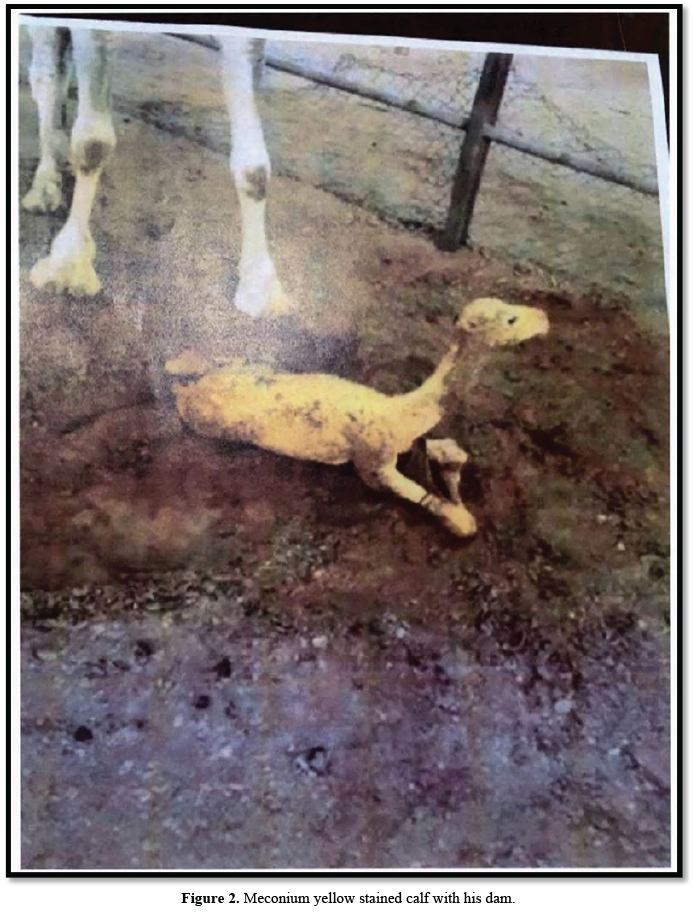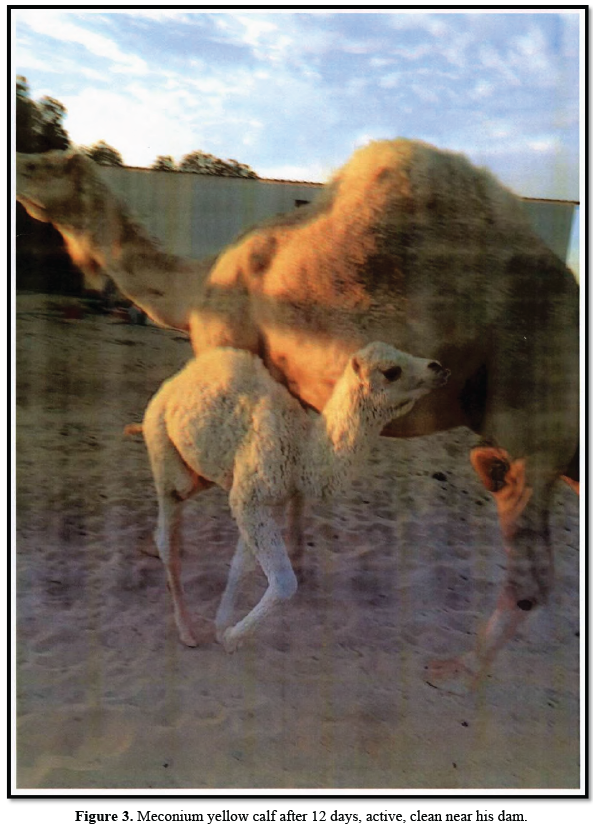Research Article
Meconium Staining in a Newborn Dromedary Camel: A Case Report
4585
Views & Citations3585
Likes & Shares
Keywords: Camelus dromdearius, Meconium staining, Colostrum, Saudi Arabia
Meconium is a viscous fluid or semifluid, yellowish to olive green in color, odorless and sterile substance present in the fetal intestine [1]. Unlike later manure (after birth) meconium, is composed of materials ingested during the uterine life of the fetus. It is normally retained in the fetus’s gut until after parturition and Camelus dromedarius usually passed out within 18-24 h after parturition [2]. In some cases of all mammalian foeti meconium is expelled into the amniotic fluid prior or during parturition and even may be aspirated by the fetus causing parturition difficultly or even mortality.
Meconium staining calves have been reported in New World Camelids [3]. However, no previous records of meconium-related disorders were recorded in Old World camelids which is also known as Camelus dromedarius. This case report is considered as the first record of meconium staining calf in Camelus dromedarius history.
The case calf was a male been born in a large dairy camel farm in Al-Jouf, northern part of Saudi Arabia. It was born at night in the calving season which is usually in winter with a temperature as low as 5°C for about four months of the year (November to February). Unfortunately, there was no night farm attendant to assist parturition if needed, and simply in the next early morning the workers found the calf completely stained with yellowish odorless substance, exhausted and showed little response to its surroundings.
The calf was unable to stand and nurse his dam udder with moderate ocular congestion but there was no evidence of hypoxia or abdominal discomfort.
The calf immediately was transferred to a separate room with his dam and warmed up. Initial attempts are to give it colostrum to the newborn via a feeding bottle but they were unsuccessful because it was exhausted and recumbent. After nearly four hours of repeated attempts with more warming and massaging the calf accept the feeding bottle colostrum, and soon after one bottle sucking it was able to stand on its own and began nursing its mother [4]. The calf was 42 Kg weight and has been injected selenium and Vitamin E and was ear tagged according to farm policy. Calf was under close supervision with his dam in the nursing pen for 15 days and was presenting good response, movements and body growth. After 15 days of close supervision calf and dam were transferred to milking pens according to farm policy.
In general meconium-stained calves are usually common with mal presentation, torsions and even larger calves, backwards calf or breech birth also facilitate meconium expulsion during delivery [5]. Nutritional issues such as low-grade calcium deficiencies can lead to lack of uterine contraction and delayed parturition. Meconium is considered a pretty sterile substance but aspirating it can cause damage to the lungs and predispose calf’s sickness, so for this reason it is good to mark down your calving records “calf meconium stained”.
Majority of these calves well do well but the warning of meconium staining tell us something to observe them closely.
In the writer’s opinion, the main reason for this condition was the relatively large size of the calf compared to the average birthweight of body weight of farm records (34- 37 Kg). The farm has enforced the availability of at least on labor on night shift in calving pens during calving season to attend, report and even call for help (Figures 1-3).



- Berenice D (2015) Meconium Impaction. The Merck Veterinary Whitehouse Station, NJ: Merck & Co., Inc.
- Tibary A, Rodriguez J, Sandoval S (2008) Reproductive emergencies in Theriogenology 70(3): 515-534.
- Whitehead CE, Cebra C (2014) Llama and Alpaca care. pp: 552-575.
- Wray S, Jones K, Kupittayanant S, Li Y, Mathew A, et al. (2003) Calcium signaling and uterine contractility. J Soc Gynecol Investig 10: 252-264.
- Lewis R (2017) Canadian cattle men, Meconium staining of newborn calves is a red flag.
QUICK LINKS
- SUBMIT MANUSCRIPT
- RECOMMEND THE JOURNAL
-
SUBSCRIBE FOR ALERTS
RELATED JOURNALS
- Journal of Psychiatry and Psychology Research (ISSN:2640-6136)
- Journal of Nursing and Occupational Health (ISSN: 2640-0845)
- International Journal of Medical and Clinical Imaging (ISSN:2573-1084)
- BioMed Research Journal (ISSN:2578-8892)
- International Journal of Diabetes (ISSN: 2644-3031)
- Journal of Oral Health and Dentistry (ISSN: 2638-499X)
- Journal of Pathology and Toxicology Research





